Help improve our local water quality!
************************************************************************************************************
Hamburg Township is a unique township. Our Chain of Lakes contains Hay, Halls, Pettysville and Chilson Creeks, Mill Pond, Chilson Impoundment, a few canals, 38 lakes, the mighty Huron River, as well as many wetlands and floodplains. Water is what draws people to our community, so we want to ensure that we protect the unique characteristics of Hamburg Township that make it so unique. This is called a watershed. It is important to protect our watershed.
It is very important to utilize green infrastructure whenever possible, to reduce the amount and speed of stormwater runoff to our waterbodies everywhere. There are aquatic habitats along most shorelines in Hamburg Township that need our protection. By doing so, we can ensure aquatic life can safely reproduce for generations into the future. Utilizing native aquatic plants, instead of Kentucky Blue turf grass mowed or a hardscaped seawall, at the lake’s edge can reduce eroding sediment and nitrogen leachate from running into our waterbodies and creating algae blooms. The creation of native buffer strips near the water's edge is required by Hamburg Township's Ordinance. Such native plant buffering will add beauty as well as aid nature with many of its processes. Such smart green infrastructure help to detour Canadian Geese from your shoreline property as well. Geese are afraid to land where they can't see their hidden predictors. The more native and aquatic plants you allow to grow between your home and your lake, the better in deterring geese from your property.
Fertilizer is beneficial, if used appropriately. The only time to apply fertilizer is between May and November when the ground surface has thawed. This will allow the microbes (bacteria, fungi, protozoan, nematodes and invertebrates) to assist plants in making this fuel available to plants. Usage should be done according to the label (which is the law) and applied at least 50-100 feet from any waterbody, river, or creek. See our ordinance as to your district's buffer setback requirements for fertilizers. It has been shown in many analytical evaluations of our local soils that phosphorus is very abundant and unneeded in many cases. The best fertilizer to use is organic brands without phosphorus in them. It is always best to do a soil test before applying any fertilizer, to ensure you have the best ratios of nitrogen (N), phosphorus (P) and potassium (K) for your intended use.
To learn more about green infrastructure, native buffers, and shoreline protection, see the resource links below.
***************************************************************************************************************************************************************
Join HRWC's Change Makers Bootcamp to learn basic river-friendly policies that protect clean water and how to navigate your local government’s decision-making processes. This FREE, in-person Bootcamp is open to all Huron River watershed residents.
Change Makers will learn about:
- The Huron River and its watershed
- How development of neighborhoods and businesses throughout the watershed impact water quality and natural areas
- How local governments make decisions about the location and design of developments
- How residents can get involved with their local government to influence these decisions
Date: Wednesday, March 20, 2024, 5:30 — 7:30 pm
Location: Chelsea District Library (McKune Room) 221 S. Main Street Chelsea, MI 48118
Sign up for the Change Makers Bootcamp here!
1. Reduce your fertilizer needs. Check out this Best Practices for Turf Lawn Care flyer for more information. Click here
Note: the care of your lawn and shoreline near the water's edge will determine how often geese will visit your property.
Mulch your grass clippings and fall leaves into your lawn. It provides 25% of your annual fertilizer needs for your lawn and your garden. See the HRWC lawn care brochure here or their website here. Taking very good care of your lawn means more coverage, less run off and more percolation into the soil. See this Rain Simulator video to understand this better here.
Resources about hunting Canadian Geese and other water fowl in Michigan MDNR: here.
2. Get a Free Well Water Test.
The Department of Environment, Great Lakes and Energy (EGLE) is excited to announce a special program to help Michigan families know the quality of their well water. EGLE and local health departments (LHDs) are working together to ensure that safe drinking water is a priority for Michigan families.
Last year, the Michigan Legislature appropriated $5 million to provide free well water testing for Michigan residents who rely on a household or private well for their drinking water. Water from private wells may sometimes not be safe to drink. Water wells should be checked more frequently as water quality changes over time. Many substances may be found in well water that could be harmful and may cause illness, including bacteria, nitrates, and some metals, such as arsenic. Residents who test through this free program will have the assistance of the LHD to help determine the next steps if the test results show a problem with their well water quality.
If you have a private well and you want to know if your water is safe to drink, here is what you can do:
1. Talk to your LHD. They can tell you if there is anything special you need to know about the water in your area.
2. Go to the EGLE website: Michigan.gov/EGLEPrivateWells
3. Don't worry if you are not sure what the laboratory results mean-your LHD will help you understand the results and will guide you on next steps, if necessary.
This free testing program is your first step in knowing if the water you drink from your private well is safe, and steps to take if an issue is found.
written by: Sarah Pearson, Supervisor of Source Water Unit, PearsonS@Michigan.gov, or call 517-420-3219.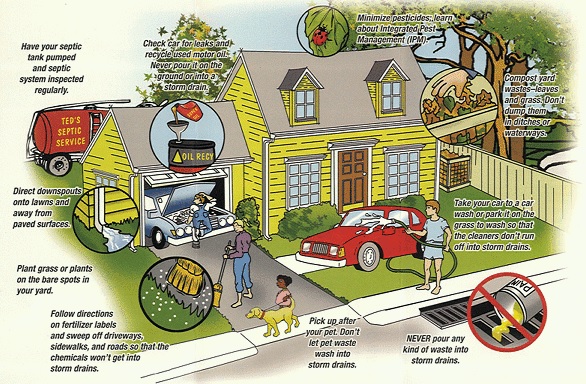 3. Ensure that you do not have an illicit discharge. Please report illicit discharges.
3. Ensure that you do not have an illicit discharge. Please report illicit discharges.
According to EGLE (Environment, Great Lakes and Environment), an illicit discharge is any discharge (or seepage) to the separate stormwater drainage system that is not composed entirely of stormwater or uncontaminated groundwater. To learn more about illicit discharges and ways to avoid such connections, see their website here. Here is their brochure on Illicit discharges.
If you notice any illicit discharges going into your local water bodies (Lakes, rivers, streams, canals), please contact our Utilities Manager, Tony Randazzo. Email Tony Randazzo or call 810-222-1191. Illicit Discharge Warning Signs could include stains, suds, unusual odors (sewage or gas), structural damage to streets or gutters, and abnormal vegetative growth in nearby water bodies. Check out Hamburg Township's brochure here, 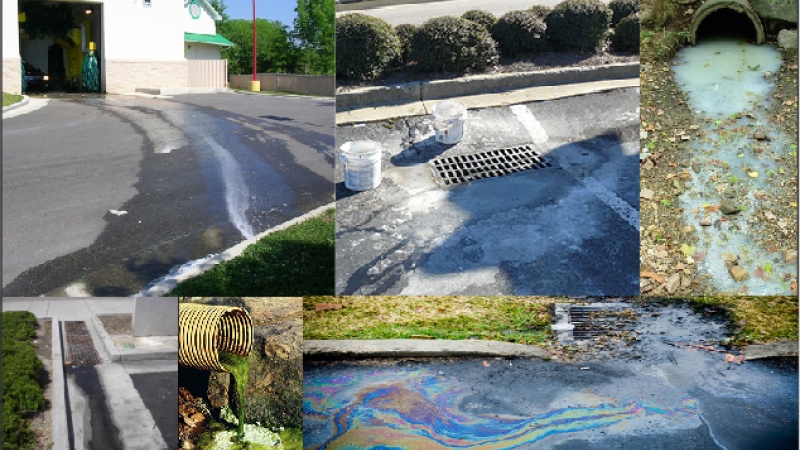
*https://www.ci.superior.wi.us/557/Illicit-Discharge-Detection-Elimination
*https://www.modot.org/illicit-discharge-detection-and-elimination
4. Properly maintain your onsite septic system and learn to recognize this system's failure. 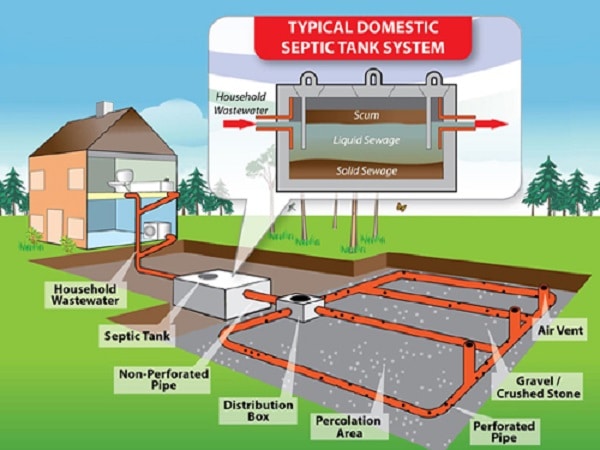
Your onsite septic system is an important part of your home. It treats the water that you use everyday. In areas where public sewer is not available, homeowners must install sewage systems (known as septic systems) on their property that will treat wastewater coming from their home. All facilities such as toilets, sinks, bathtubs, showers, washing machines, dishwashers, or anything else that generates sewage must be connected to a sewage system. Footing drains, roof drains, storm water pipes, and water softening waste should not be connected to sewage systems. These items should discharge away from the drain field area, and in a manner that does not impact neighboring property. Also, water softener wastewater should not discharge near wells or surface water. Onsite sewage systems must be designed according to Livingston County standards, and must be inspected and approved by a sanitarian (health inspector). Sewage systems are different from municipal sewers because they have a limited life expectancy, which can be drastically reduced if the system is improperly use or not maintained.
A failed septic system is very expensive to fix and can be a significant source of bacterial contamination in ground and surface water. Periodic inspections and routine maintenance will prevent a properly constructed system from failing. This includes having your septic system pumped out by a certified sanitary company every 3-5 years depending on the size of your household. See the HRWC Septic System Website here. Also see the HRWC Best Management Tip Sheet here. EGLE website about septage can be found here.
For the EGLE List of Livingston County Septic Haulers, see below:
* D & J Septic Service Inc., 11445 -A Chamberlain Dr, South Lyon, MI 48178. 248-437-2610.
* Hartman's Septic LLC, 1720 Richards Road, Howell, MI 48855. 517-294-8433.
* Ann Arbor Portable Toilets LLC, 2122 Tiplady Rd, Pinckney, MI 48169. 734-648-0242.
* Eldred and Sons, 4366 W. Grand River, Howell, MI 48855. 810-229-6857.
* Lashbrook Septic, 4895 Curdy Rd, Howell, MI 48855. 517-546-2268.
* Patrick Esper Septic, 5700 Emmons Rd, Fowlerville, MI 48843. 517-404-3328.
* Anything Outdoors Contracting, LLC, 6779 Brophy Rd, Howell, MI 48855. 248-469-7416.
* Hartland Septic Service, INC., 7230 Faussett Rd, Fenton, MI 48430. 517-548-2487.
* Bolton Septic, LLC., 7350 E. M-36, Ste B, Whitmore Lake, MI 48189. 248-852-0440.
* Port-A-Call LLC, 7820 East Allen Rd, Fenton, MI 48430. 248-245-7545.
* Howell Sanitary Co., II, P. O. Box 2428, Howell, MI 48844. 517-546-2978.
* Eagleton Septic, P. O. Box 788, Highland, MI 48357. 810-632-7099.
5. Scoop the dog waste from your yard and neighborhood. 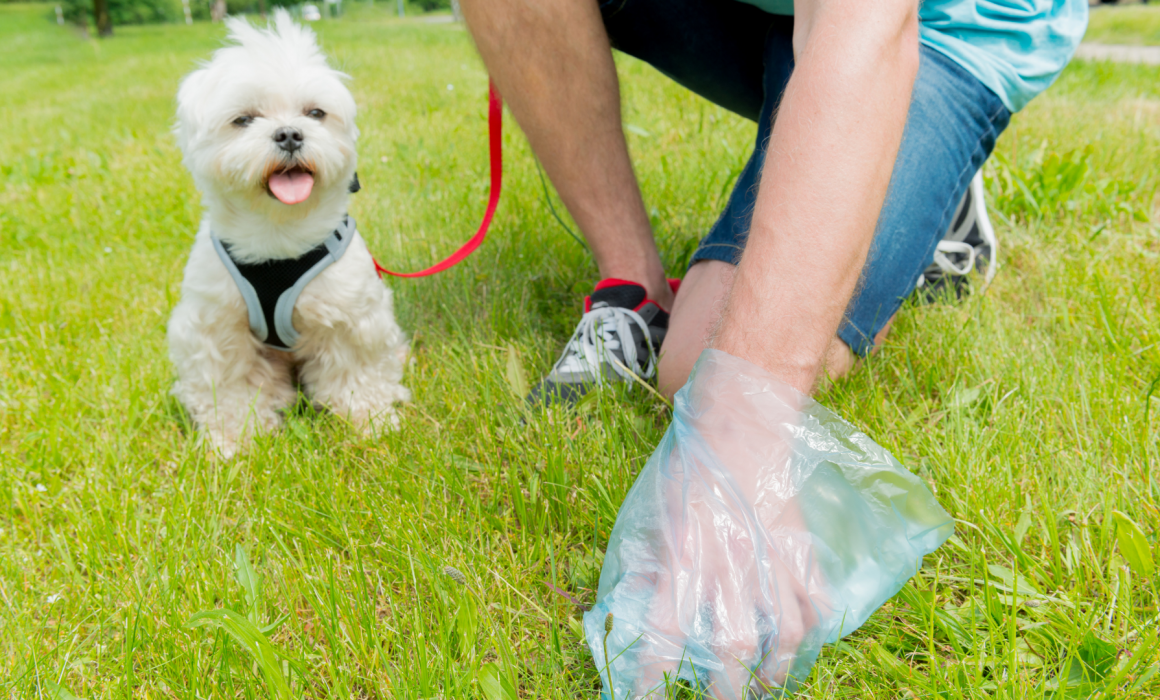
Pet waste contributes to water quality problems. When it ends up in the stream or river, it decomposes, using up oxygen and releasing pollutants into the water. Nutrient from pet waste can also cause excessive growth of aquatic weeds and algae, making waterways murky green, smelly and unappealing. Bacterial contamination from E. coli and other harmful microorganisms in pet waste, especially following rainstorms, remains a human health concern for some waterways in the watershed.
Carry plastic doggie doo bags with you to scoop up your pet's waste. Ensure to tie the bag closed and place it into a plastic trash bag that is headed to the local landfill. Please do not leave it on the ground for someone else to walk in, hit with a lawnmower or ride their recreational vehicle or bike through. Check out this detailed tip sheet for more information from the HRWC here.
6. Use a public RV (Travel Trailer) dumping stations.
1. Brighton State Park, 6360 Chilson Road, Howell, MI 48843. CALL (810) 229-6566. ($10.00 fee for dump station use only without camping onsite.)
2. Taylor’s Beach Campground, 6197 N. Burkhart Rd., Howell, MI 48855. CALL (517) 546-2679. ($20.00 sewage dump fee for non-campers).
3. Bruin Lake Campground, Pinckney State Park, 8555 Silver Hill Road, Pinckney, MI 48169. CALL (734) 426-4913. ($10.00 fee for dump station use only without camping onsite).
Please note: that RVs and Campers can use almost any campground with a septage dump station in the state. However, there may be a charge for non-campers.
7. Use less Hazardous Products around your home.
Many commercial grade soaps contain non-biodegradable detergents and acids. If you wash your car at home, try buying soaps that are labeled "non toxic", "phosphate-free" or "biodegradable." The safest products for the environment are vegetable-based or citrus-based soaps. Minimized the amount of water running into a storm drain by washing your car on the lawn instead of the driveway. This will not only give your lawn a watering, but the grass and soil will naturally filter out some of the harmful chemicals or fluids. EGLE recommends using normal everyday products to clean your vehicles and boats without all of the hazardous chemicals to avoid it running into the local storm sewers, rivers, canals, and lakes. Less phosphorus, nitrates and PFOS chemicals found in cleaning products is better for our local water quality, for our aquatic wildlife and for our environment. See EGLE's recommended list of cleaners here.
*Taken from EGLE's Care Care and Your Water brochure here.
8. Dispose of Household Hazardous Wastes, Chemicals and Motor Oil appropriately. Please don't put in trash or into a nearby drain!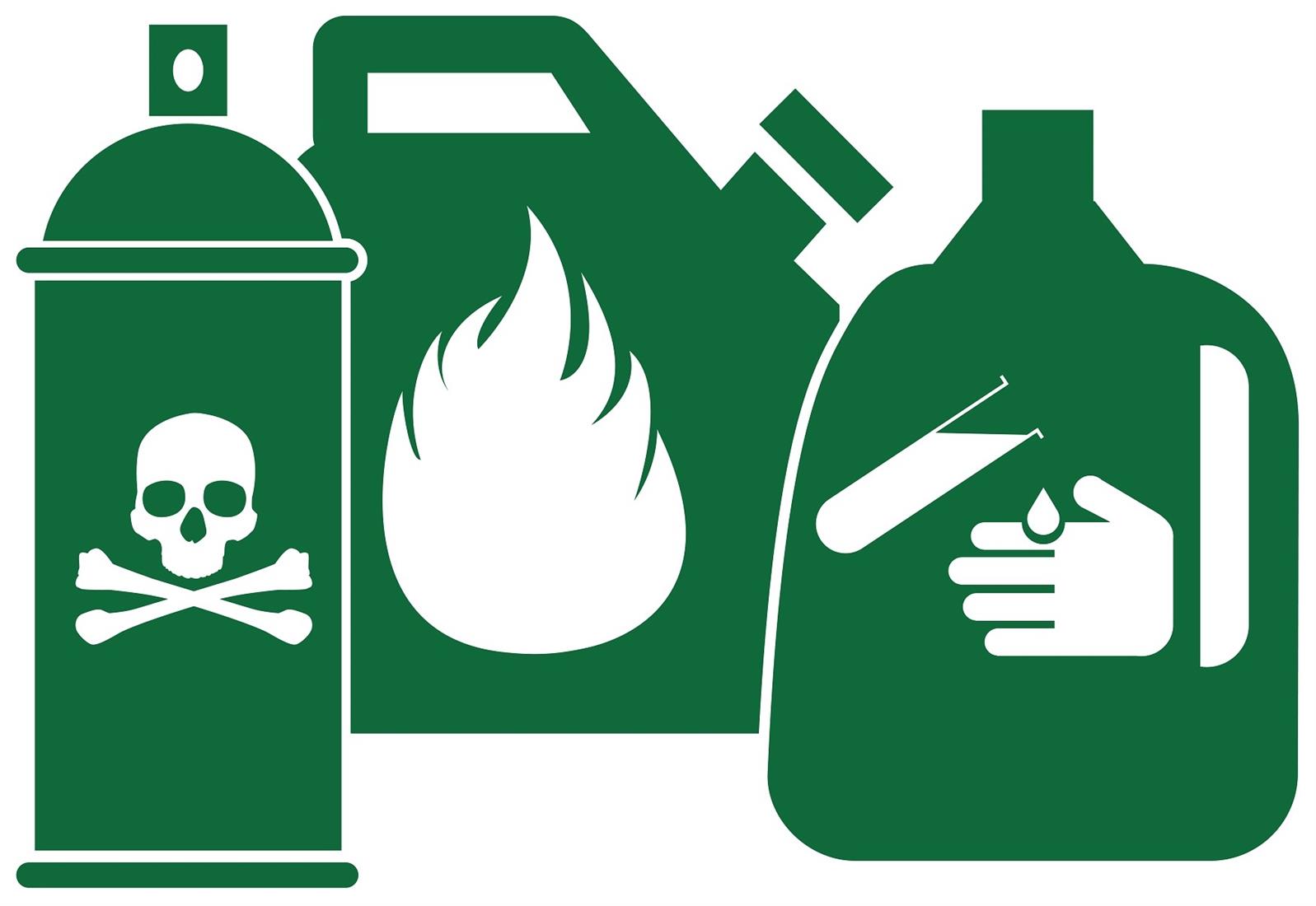 Livingston County has Household Hazardous, Tire, Latex Paint, and Electronic Collection Dates many times per year. Please visit their website here. These are the list of items that they can accept at these Household Hazardous Events. Check out the HRWC Home Toxics page here.
Livingston County has Household Hazardous, Tire, Latex Paint, and Electronic Collection Dates many times per year. Please visit their website here. These are the list of items that they can accept at these Household Hazardous Events. Check out the HRWC Home Toxics page here.
*Motor oil should be drained into a clean plastic jug with a screw on lid. Ensure to label it as "Motor Oil." Don't mix used oil with any other fluids, substances or rainwater. Call local oil recycling locations below before taking to their business.
1. A & J's Quick Lube- 7554 E. M-36, Hamburg, MI 48139. 810-231-2530.
2. O'Reilly Auto Parts- 2182 W. Stadium Blvd, Ann Arbor, MI 48103. 734-996-4100.
3. Mazur's Total Automotive of Pinckney/Hamburg- 5759 E. M-36, Pinckney, MI 48169. 810-231-2322.
4. Smart Auto- 10570 Hall Rd, Whitmore Lake, MI 48189. 810-231-9655.
5. Carney's Complete Auto Service- 455 S. Howell St., Pinckney, MI 48169. 734-878-4400. (charge of $5.00 per gallon)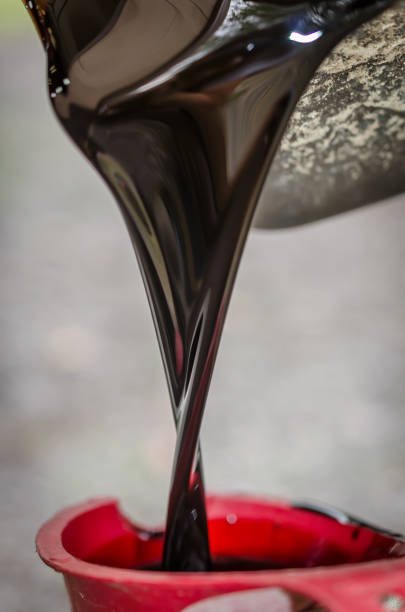
6. Auto Zone- 1343 M-36, Pinckney, MI 48169. 734-878-6744. (no fee)
9. Choose not to use coal-tar as driveway and parking lot sealants on your Hamburg Township parcel.
Coal-tar sealants are hazardous chemicals used as a common pavement sealant. Hamburg Township prohibits the use and sales of such products in the township in Chapter 6: Article II of Hamburg Township's Ordinance Code. 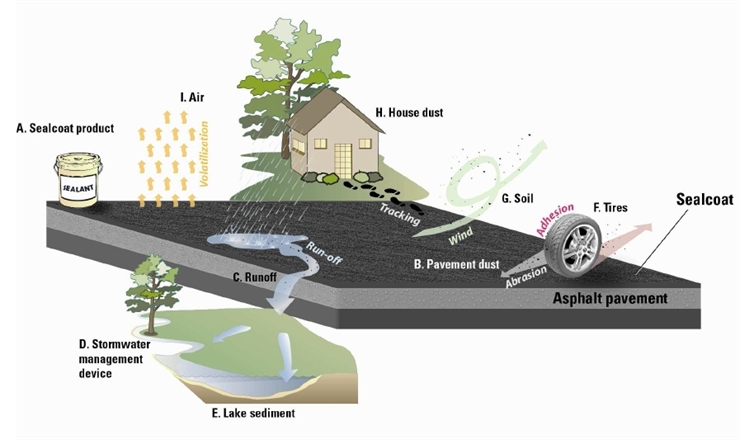
Coal tar pitch is a known human carcinogen. Many studies have shown an increased risk of cancer in humans and the impairment of water quality in streams. Coal tar wears off, breaks down into particles and washes into the watershed. Toxic compounds also evaporate into the air. People who live near coal-tar sealed pavement have 38 times higher polycyclic aromatic hydrocarbons, or PAHs levels than other individuals. PAHs are toxic to mammals, birds, fish, frogs, plants, and humans.* Coal tar based sealcoat ends up in water bodies. Hamburg Township is a bed-room community surrounded by the waters of the Huron River.
Some things to consider before having your driveway sealed-
1. Hire only a contractor who provides a MSDS (Material Data Safety Sheet) for the intended product used in the sealant job. Coal tar is listed as CAS : 65996-93-2.
2. If doing the driveway sealing job yourself, purchase products that have a "coal tar free" logo.
3. Asphalt is better for the environment than coal tar sealant.
*https://www.usatoday.com/story/money/business/2013/06/16/toxic-driveways-cities-states-ban-coal-tar-pavement-sealants/2028661/
10. Planting and Caring for Trees.
Trees are the longest living organisms on earth. No matter how the size, every tree provides an environmental benefit that improves our community. Trees renew our air supply by absorbing carbon dioxide and producing oxygen. Shade trees can help make buildings up to 20 degrees cooler in the summer. Tree roots stabilize soil and prevent erosion.
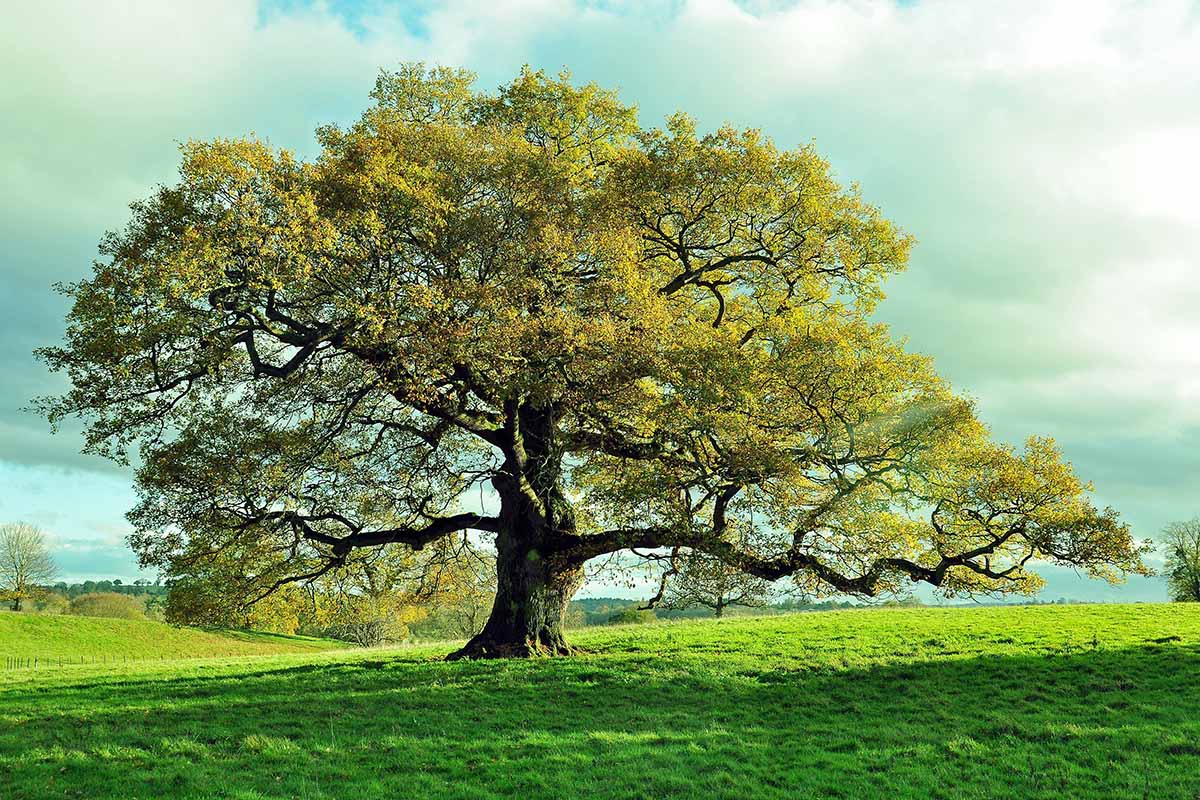
According to Peter Wohlleben, a German forester and author of The Hidden Life of Trees: What They Feel, How They Communicate, trees are far more alert, social, sophisticated, and even intelligent, than we thought. Trees are very considerate in sharing sunlight, and their root systems are closely connected. In cases when one tree dies, other nearby trees die soon afterward, because they are dependent on each other. Through this wood-wide web, trees communicate to other nearby species via chemical interactions through their long roots that connect via mycorrhizal and fungi networks underground. Trees and plants also release pheromones and other scent signals through their leaves to other nearby species and other beneficial insects. Trees and other plant species can communicate through sounds in their phylum when they are being attacked by disease pathogens or insects. ***
Spring and Fall is the best time to plant trees and shrubs. The MDNR is asking all Michigan residents to consider planting trees on their properties to reach the goal of 50 million by 2030. When considering a tree or shrub, project how large this type of tree or shrub specie will be when fully mature, as you decide where the most appropriate place for planting is. Planting Michigan native species trees and shrubs are best for providing food and cover for our native wildlife.
For more information on planting trees and shrubs, check out Michigan Gardener article here, Arbor Day Foundation here, or the 50 million tree pledge by 2030 by the MDNR here.
*https://www.woodlandtree.com/terrans-tips/posts/fun-facts-about-trees
**https://www.royalparks.org.uk/parks/the-regents-park/things-to-see-and-do/gardens-and-landscapes/tree-map/why-trees-are-important
*** https://www.smithsonianmag.com/science-nature/the-whispering-trees-180968084/
References: https://pixabay.com/vectors/search/tree/88910101
Hamburg Township is a unique township. Our Chain of Lakes contains Hay, Halls, Pettysville and Chilson Creeks, Mill Pond, Chilson Impoundment, a few canals, 38 lakes
It is very important to utilize green infrastructure whenever possible, to reduce the amount and speed of storm water runoff to our waterbodies everywhere. There are aquatic habitats along most shorelines in Hamburg Township that need our protection. By doing so, we can ensure aquatic life can safely reproduce for generations into the future. Utilizing native aquatic plants, instead of Kentucky Blue turf grass mowed or a hardscaped seawall, at the lake’s edge can reduce eroding sediment and nitrogen leachate from running into our waterbodies and creating algae blooms. The creation of native buffer strips will add beauty as well as aid nature with many of its processes. Such smart green infrastructure help to detour Canadian Geese from your shoreline property as well.
Fertilizer is beneficial, if used appropriately. Usage should be done according to the label (which is the law) and applied at least 50-100 feet from any waterbody, river or creek. It has been shown in many analytical evaluations of our local soils, that phosphorus is very abundant and unneeded in many cases. It is always best to do a soil test before applying any fertilizer, to ensure you have the best ratios of nitrogen (N), phosphorus (P) and potassium (K) for your intended use. To learn more about green infrastructure, native buffers, and shoreline protection, check out Michigan Shoreland Stewards and/or Michigan Natural Shoreline Partnership links below. Baby steps matter, no matter how small.
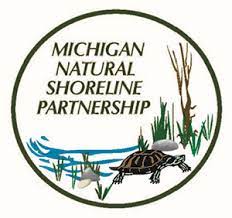

To learn more about native plants that prevent water pollution, go here.
To learn more about Michigan Shoreland Stewards, go here.
To learn more about Michigan Natural Shoreline Partnership, go here.
- Natural Healthy Lakeshores - Soft bioengineered shoreline buffer (encapsulated soil lift) is made up of native plants, coir (coconut fiber) logs, erosion blankets, rocks and rip rap. See here for more information. Soft bioengineered shoreline buffer (or a encapsulated soil lift) is made up of native plants, coir (coconut fiber) logs, erosion blankets, rocks, and rip rap. See this flyer. Also check out this booklet here.
- Hard structured seawalls- create a barrier in the shoreline zone that negatively impacts Michigan native wildlife, birds, turtles, and amphibians that are dependent on this area for habitat and reproduction. For example; the Spotted, Wood, and Blanding's Turtle are declining in numbers. 50% of Michigan inland lakeshores has been developed (high-impact) with Kentucky Bluegrass that is mowed to the water's edge. Most of the native plants and trees have been replaced with exotic, invasive plants. 67% of our native birds, fish, reptiles, and amphibians are becoming threatened and endangered by this hardening of our Michigan shoreline zone.
- Maintain 4 Michigan Lakeshore Zones on your property for a healthy environment. See this flyer for more information.
- Upland Zone- area starts 35 ft. from the top of the shoreline bank, which includes structures such as the house, driveway, and garage.
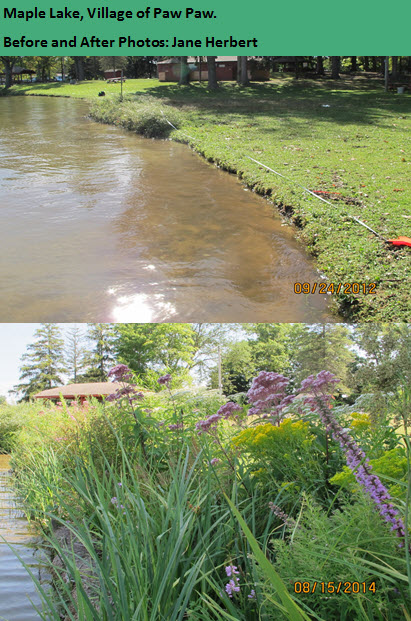
- Buffer Zone- area immediately next to the lake, which includes the first 35 ft. of the lakefront property.
- Shoreline Zone- area that transitions from the water to the land. This area begins at the top of the bank and extends to the land-water interface.
- Lake Zone- area called the littoral zone of the lake, which includes the shallow part of the lake. The size of this zone is dependent on the lake size, shape of the bottom of the lake (bathymetry) and the water levels.
Hamburg Township is a unique township. Our Chain of Lakes contains Hay, Halls, Pettysville and Chilson Creeks, Mill Pond, Chilson Impoundment
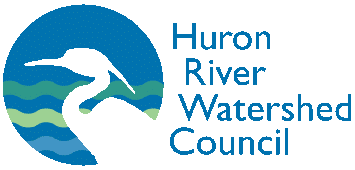
13. Become a Master Rain Gardener and put in rain gardens/rain barrels in your landscape.
A rain garden is a depressed area in the landscape that collects rain water from a roof, driveway or street and allows it to soak into the ground. Rain gardens can come in all different shapes and sizes. Planted with native grasses and flowering perennials, rain gardens can be a cost effective and beautiful way to reduce runoff from your property. Its design allows the rain garden to serve almost as a bowl that collects water from downspouts or overland flow across a property. The water is then able to slowly infiltrate into the underlying soil. The best areas are generally where water naturally drains but doesn't hold water. It should also be located at least 5'-15' away from your home. The rain garden should be located in a place that can collect as much impervious area (driveway, roof, sidewalks) runoff as possible. "Rain gardens perform the following functions: filter storm water before it enters local waterways, alleviates problems associated with flooding and drainage, recharges the ground water supply, provides habitat and food for wildlife which includes birds, butterflies and bees, and enhances the beauty of yards and the community."*
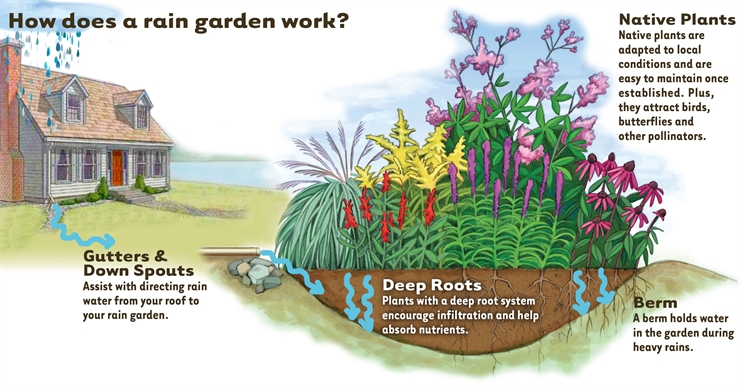
Resources on how to build a Rain Garden-
Sign up to become a Master Rain Gardener with Water Resources in Washtenaw County- here
*Greater Lansing Regional Committee on Storm Water Management- here
Huron River Watershed Council -here
Livingston County, NY- here
MSU Extension- here
Royal Oak Rain Garden Info- here.
EPA Green Infrastructure- here
SEMCOG Green Infrastructure- here
SEMCOG Rain Gardens 101- here
MSU Extension article, "Why Do We Need Rain Gardens?" here.
Green Storm water Infrastructure MSU article- here
According to the EPA website, rain barrels capture water from a roof and hold it for later use such as on lawns, gardens or indoor plants. Collecting roof runoff in rain barrels reduces the amount of water that flows from your property. It's a great way to conserve water and it's free water for use in your landscape. Many cities and towns distribute rain barrels to residents through annual sales. Other sources include online retailers, local home and garden supply stores. Cisterns are also used to "harvest" rain water. With a greater storage capacity, they may be located above or below ground. Remember that as rain water flows over a roof surface it can pick up pollutants such as bacteria from birds and other animals, and chemicals from roof materials - factors to consider when thinking about using rain barrel water on edible plantings.
Resources on how to setting up a Rain Barrel-
EPA-Soak up the Rain - here
EPA Water Conservation Rain Barrels -here
Gardener's Supply Company -here
How to Make a Rain Barrel from Clemson University -here
Rain Barrels for Vegetable Gardens with Rutgers's University -here
Rain Barrels (Washtenaw County) -here
Washtenaw County Conservation District -here
14. Learn about other green infrastructure, native buffers and shoreline protection. Be a Leader in your community today!
- Huron River Watershed Council website: https://www.hrwc.org/
- Michigan State University Extension: https://www.canr.msu.edu/news/smart-waterfront-plants-to-enhance-your-shoreline
- MSUE article, "Top 10 native plants for shorelines that are easy to find" -here.
- EGLE Advancing Inland Lake Stewardship through Shoreline Best Management Practices: Registration (gotowebinar.com) (sign in to view webinar)
- EGLE Shoreline Protection: https://www.michigan.gov/egle/about/organization/water-resources/inland-lakes-and-streams/shoreline-protection
- Protecting MI Inland Lakes: Guide for Local Governments: https://www.shorelinepartnership.org/uploads/4/6/8/6/46869113/inlandlakes_booklet_2.pdf
- Protecting MI Inland Lakes: Toolkit for Local Governments: https://www.shorelinepartnership.org/uploads/4/6/8/6/46869113/inlandlakes_toolkit_2.pdf
- Michigan Inland Lake Shorelines: http://www.shoreline.msu.edu/shorelinemgt/
- Michigan Shoreland Stewards: https://www.mishorelandstewards.org/about.asp
- (MSS) Program Guide: file:///V:/ZONING/Fertilizer%20&%20Lawn%20care/shoreland_stewards_program_guide_final10-31-17_web.pdf
- Michigan Natural Shoreline Partnership: Michigan Natural Shoreline Partnership - Home
- MNSP Trainings: https://www.shorelinepartnership.org/training.html
- What are Native Plants? https://www.shorelinepartnership.org/plants-for-inland-lakes.html
- Shoreline Living Book: here
- Natural Shoreline Landscapes on Michigan Inland Lakes: https://shop.msu.edu/products/bulletin-e3145?_pos=1&_sid=107e54949&_ss=r
- Minnesota Healthy Shoreline: https://files.dnr.state.mn.us/publications/waters/healthy_shorelines_feb-2012.pdf
15. Become an educated Policy-Advocate for PFAS and PFOS Free Products, both residential and commercial uses.
PFAS are man-made chemicals that have been used in industry and consumer products worldwide since the 1940s. They have been used to make nonstick cookware, water-repellent clothing, stain resistant fabrics and carpets, some cosmetics, some firefighting foams, and products that resist grease, water, and oil. The most commonly studied PFAS are perfluorooctanoic acid (PFOA) and perfluorooctane sulfonic acid (PFOS). The next most commonly studied are perfluorohexane sulfonic acid (PFHxS), and perfluorononanoic acid (PFNA). PFOA and PFOS have been phased out of production and use in the United States, but other countries may still manufacture and use them.
During production and use, PFAS can migrate into the soil, water, and air. Most PFAS (including PFOA and PFOS) do not break down, so they remain in the environment. Because of their widespread use and their persistence in the environment, PFAS are found in the blood of people and animals all over the world and are present at low levels in a variety of food products and in the environment. Some PFAS can build up in people and animals with repeated exposure over time.
Many scientific articles have been published about PFAS exposure and health effects. While it is difficult to show that substances directly cause health conditions in humans, scientific studies have shown that exposure to some PFAS in the environment may be linked to harmful health effects in humans and animals. More research is needed to better understand the health effects of PFAS exposure. New kinds of PFAS are being developed. Some of these may have properties similar to the existing PFAS, and some may be less persistent in the environment. There are very few scientific studies on new PFAS, so more research is necessary to discover whether they may be a health concern.
A large number of studies have examined possible relationships between levels of per- and polyfluoroalkyl substances (PFAS) in blood and harmful health effects in people. However, not all of these studies involved the same groups of people, the same type of exposure, or the same PFAS. These different studies therefore reported a variety of health outcomes. Research involving humans suggests that high levels of certain PFAS may lead to the following:* Increased cholesterol levels
*Changes in liver enzymes
*Small decreases in infant birth weights
*Decreased vaccine response in children
*Increased risk of high blood pressure or preeclampsia in pregnant women
*Increase of risk of kidney or testicular cancer
Resources on PFAS and PFOS in our water ways.
*HRWC PFAS website -here.
*EPA -PFAS Master List of PFAs Substances -here.
*National Institute of Environmental Health Sciences -here.
*American Chemistry Council- here.
*Agency for Toxic Substances and Disease Registry- here.
*Ecology Center-here.
*Environmental Work Group -here.
*Environmental Science Processes & Impacts" by Royal Society of Chemistry - here.
*The Intercept article, "Toxic PFAS Chemicals Discovered in Hundreds of Products" -here.
*Clean Water Action article, "10 Things You Can Do About Toxic PFAS Chemicals" -here.
*Natural Resource Defense Council article, "Forever Chemicals" Called PFAS Show Up in your Food, Clothes and Home"- here.
*Time article, "All the Stuff in your Home That Might Contain PFAS 'Forever Chemicals'" here.
*Scientific American article, "Forever Chemicals Are Widespread in U.S. Drinking Water" -here.
*Toxic-Free Future -here.
16. Become a Michigan Lake & Stream Association member.
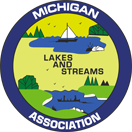
The MLSA began in 1961, as a state-wide 501 (c) (3) nonprofit organization that is dedicated to the preservation and protection of Michigan's vast treasure of inland lakes and streams. Their mission is to support riparian associations while providing collective and individual education and conservation initiatives for their members. These include lake associations, concerned citizens, commercial and nonprofit businesses as well as public and private partners. They have over 1,500 individual members, 50 corporate and nonprofit partners, and more than 250 associations whose aggerate statewide membership exceeds 100,000. MLSA is a collaborative organization that serves as the Program Administrator for the MiCorps Cooperative Lakes Monitoring Program and is an active partner in the Michigan Inland Lakes Partnership and the Michigan Natural Shoreline Partnership. Membership to MLSA is open to any individual, lake, stream, or watershed association, organization, or corporation who shares our interest in preserving the high quality of Michigan's inland lakes for future generations. To learn more about MLSA, check out their website here.
17. MSU Extension's Introduction to Lakes Online course is back this January 2024
From lakefront property owners to local government officials, this course has something for everyone. Over 1,800 people have participated in the class since it was first offered in 2015 and we'd love to see this number grow.
Course topics include lake ecology, watershed management, shoreline protection, aquatic plants, Michigan water law, and community engagement. Each topic is explored via video lectures, interactive activities, discussion forums, and additional learning resources. We also host three live Ask-an-Expert webinars featuring experts from Michigan State University, the Michigan Department of Natural Resources, and the Michigan Department of Environment, Great Lakes, and Energy.
This year the course will kickoff on January 30, 2024. Registration is open until January 28. The cost is $115 per person. Register by January 12 for an early bird price of $95 per person. Scholarships are available.
A course schedule and registration details are available on the Introduction to Lakes website at www.canr.msu.edu/lakesonline.

